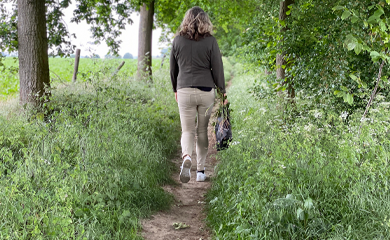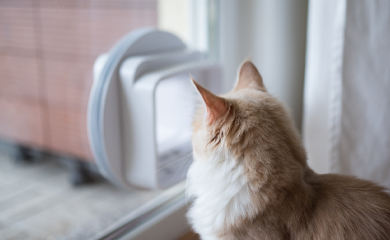
Search
A physical search for your pet is crucial to reunite with your furry friend.
Start by inspecting the usual spots your pet frequently visits, and walk along their usual route to spot any alterations in the area that may have deterred your pet from returning home. This could include new pets in the vicinity or recent construction work nearby, which can unsettle your pet and lead them to wander beyond their usual boundaries.
Here are some pointers from our dedicated Missing Pet Search Team on how to locate your pet:

To begin your search, start from the outskirts of the area where you suspect your pet might be, then walk towards your home while calling out.
It's advised not to walk away from your home while calling out, as this might lead your pet in the wrong direction if they are already between you and your home.
Call out using your usual tone and stay composed. Pause your walk occasionally to listen for any response, especially if your pet is in a confined space like a garage or an empty property.
In case your pet is injured and unable to approach you quickly, stand still for about five minutes and call out. If there's no response, move to a different spot and repeat the process.
| Sean from our Missing Pet Search Team insists that the time of day plays a crucial role. |  |
"It's advisable to call for your pet during peaceful times. I suggest early mornings or late evenings. This allows you to pick up on any faint responses. Additionally, try to go out when your pet is usually most active. Aligning your search with your pet's regular routine will help you find them based on their unique behavior."

The environment around you
Take note of any vacant houses for sale or rent on your street or in the surrounding area. Contact estate agents to enquire about cat flaps in these properties that your pet might have entered but is unable to exit. Empty properties often have open windows before viewings, providing an opportunity for pets to sneak in unnoticed.
If any neighbors are away on vacation, your pet could have accidentally been trapped inside their home, garage, or shed. Keep an eye out for any signs and notify the homeowner promptly.
Ask neighbors to inspect sheds and outbuildings as pets often hide in such places when frightened. Stay with them during the search to ensure thorough checking. Encourage neighbors to keep their sheds, garages, and outbuildings open briefly to give your pet a chance to come out on its own. Having someone in the doorway can deter pets from feeling safe enough to emerge.
Inform local shops, restaurants, and takeaways about your lost pet as their large bin areas can provide shelter and food. These establishments are typically active during early mornings and late evenings, common times for lost pets to move about. Remember to scan high areas like trees and scaffolding where pets may get stuck and remain unseen. In inclement weather, pets seek shelter in warm, dry spots and may remain still for extended periods. Search for your pet in dry, cool weather to increase the chances of spotting them on the move.

Having the correct equipment is essential for a successful reunion. After a positive sighting, using a humane pet trap can be very effective. These traps are baited with food, and once the pet enters, the door closes slowly behind them. Feel free to reach out to us if you want to learn more about traps and how to acquire one.
| Juliet from our Missing Pet Search Team shares her experience with traps. |  |
“Make sure you have put in your pet’s favourite food (ideally something smelly) to encourage your pet inside the cage. Cover the cage with your pet's blanket to mask the metal and attract them with familiar scents. Remember to monitor the cage frequently, ideally every hour, as any animal caught inside may become distressed quickly."
When pets experience stress, they may behave differently and enter a survival mode. This can result in them not recognising your voice or approaching you as usual. Using traps can be essential for capturing certain pets. Once they settle back at home and relax, they will likely return to their normal selves.
Creating a recording of yourself calling your pet in a calm and reassuring manner on a Dictaphone or mobile phone can be helpful to share with friends and family assisting in the search. They can play the recording during the search, hoping to attract your pet if it's nearby. Pets are more likely to respond to the sound of your voice than to unfamiliar voices. You can share the recording via Dictaphones or send a voice note on your mobile phone.
In case your dog goes missing, ensure that everyone has a collar and leash on hand. It's crucial to have the necessary tools to secure your dog once they are found.


